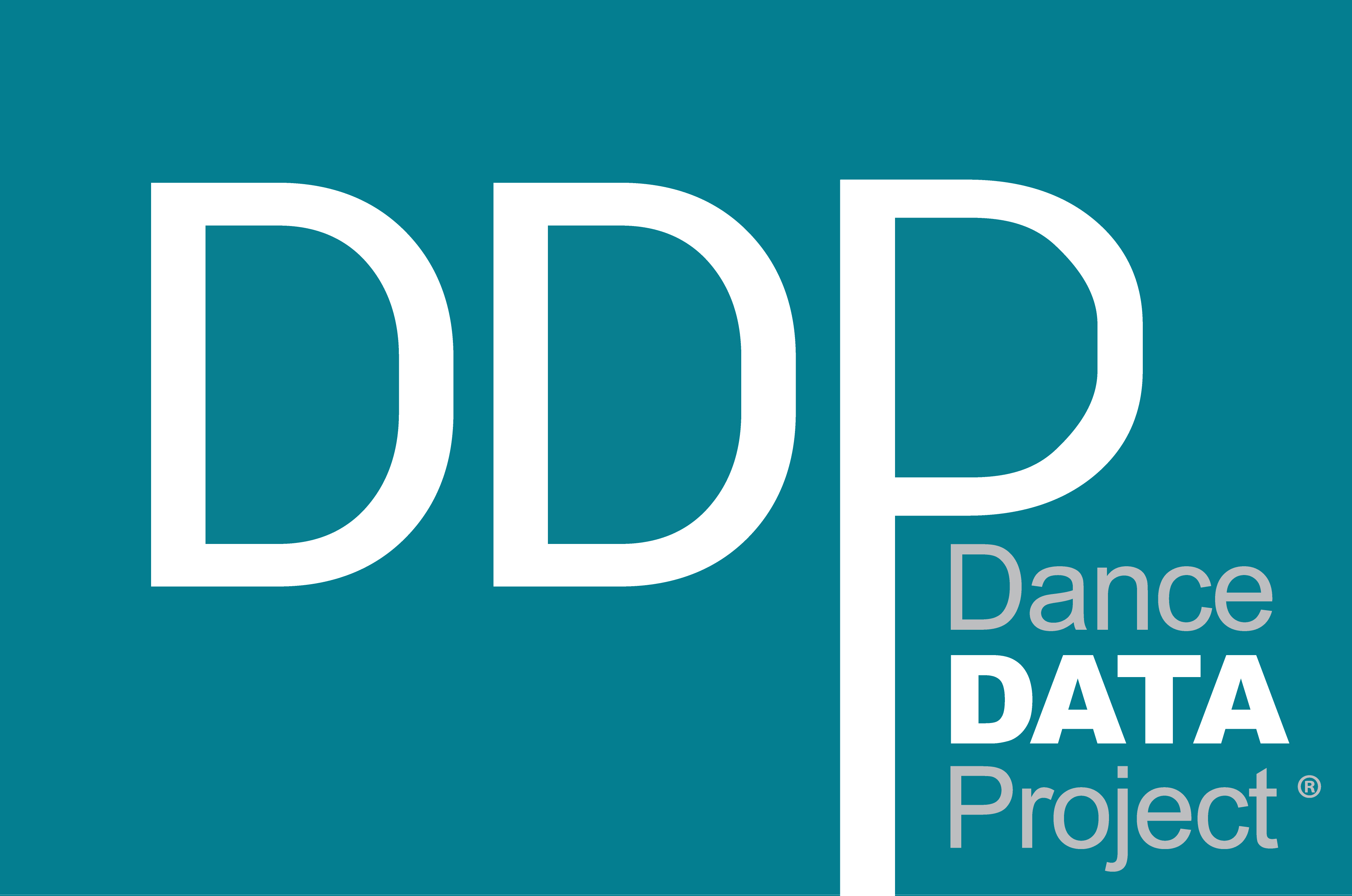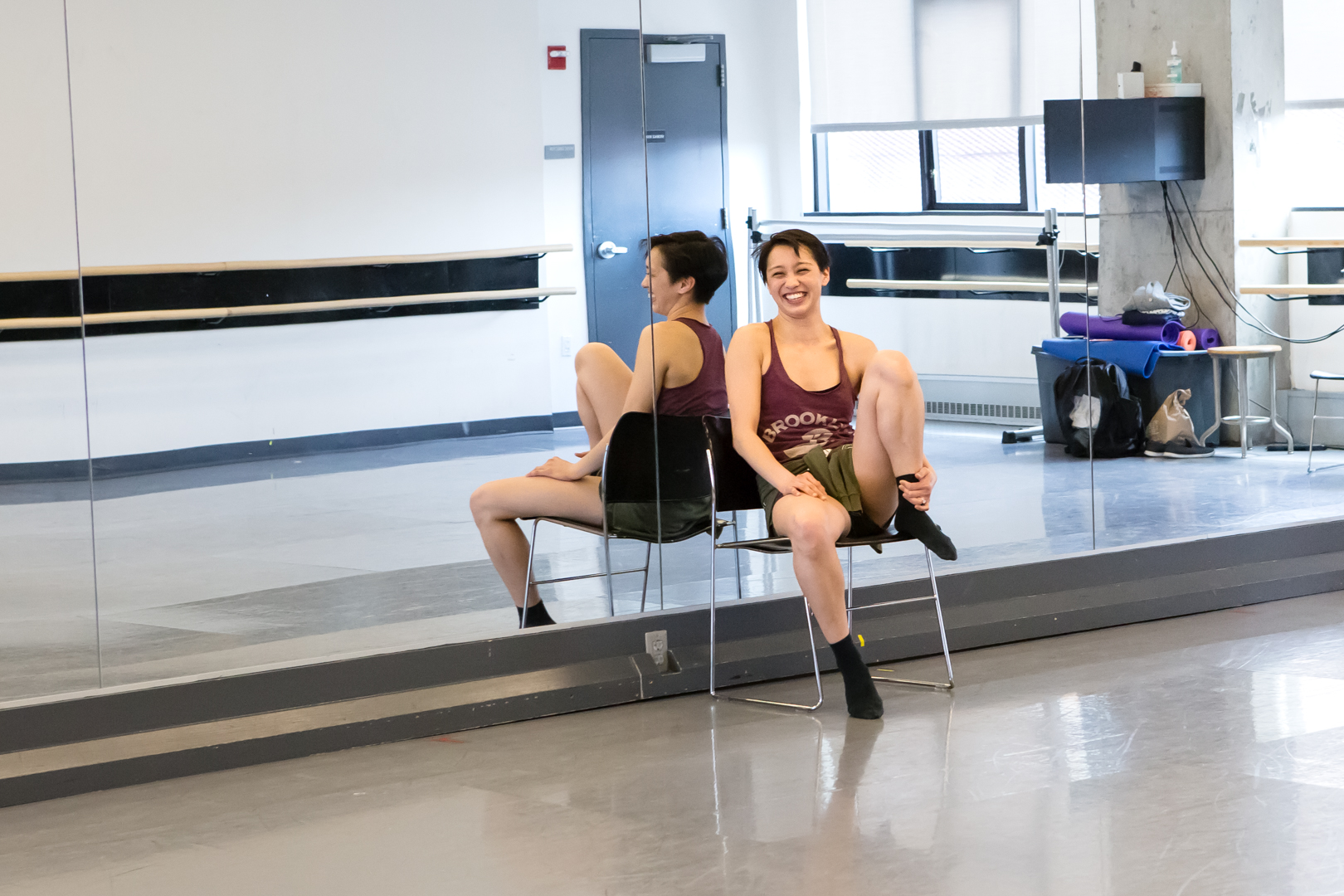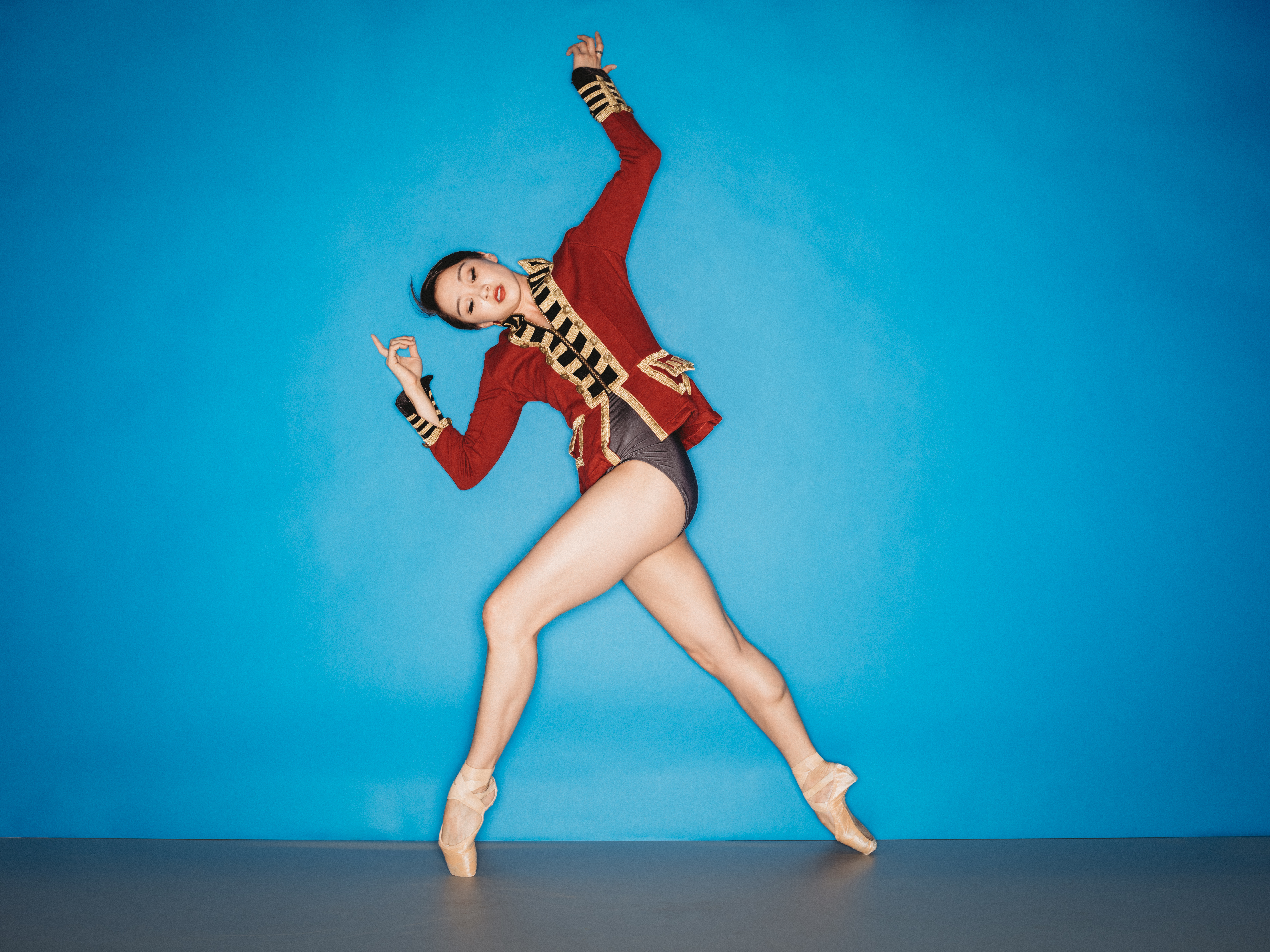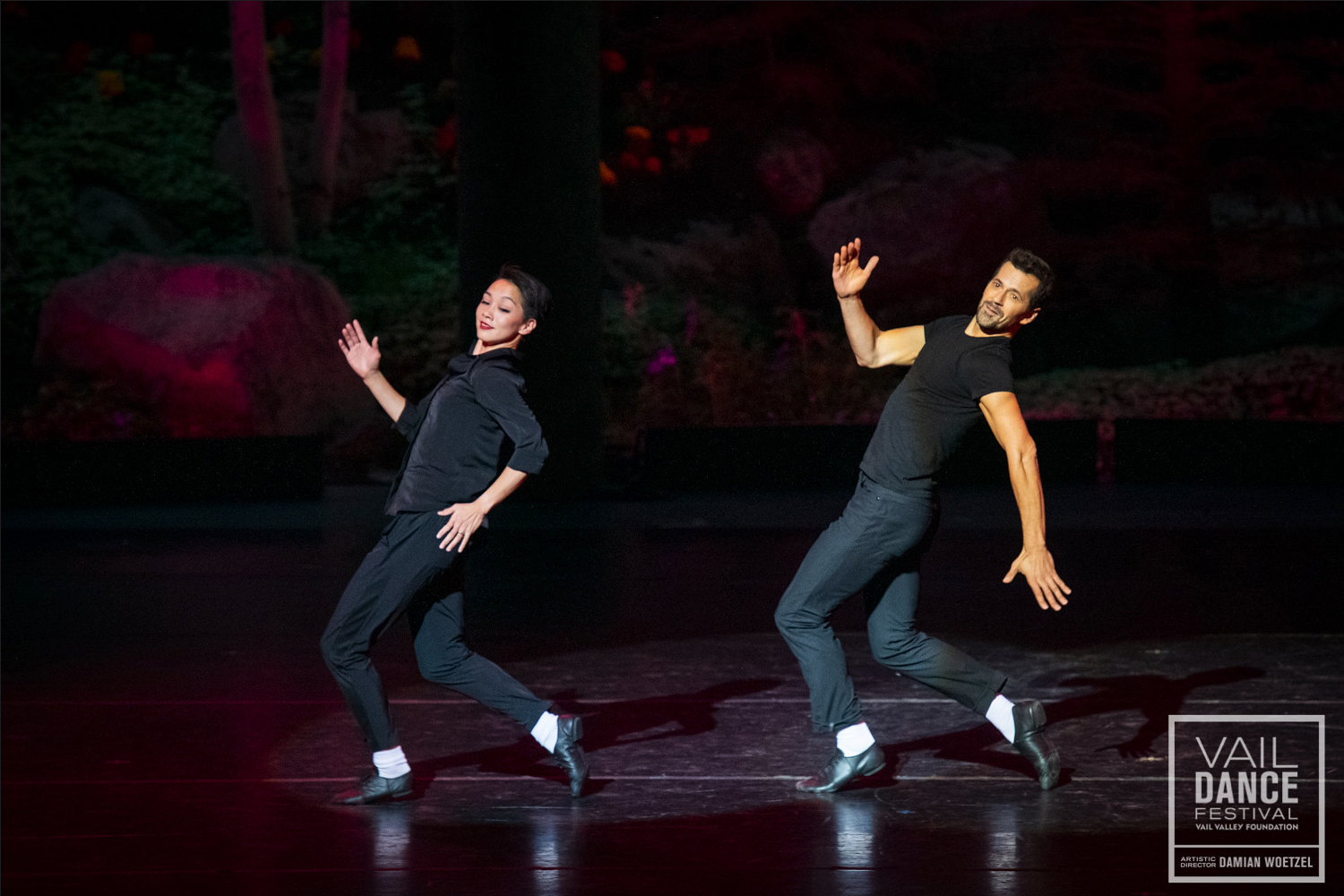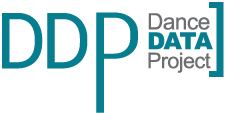Choreographer Profile:
Caili Quan
This summer, you will be one of two Artists-In-Residence for the 33rd annual Vail Dance Festival. In addition to choreographing two new pieces, you’ll also be dancing, performing, and teaching Master Classes in Vail. What are you most looking forward to about your various upcoming roles and duties at the Festival?
This summer, I get the incredible opportunity to create and dance with artists that I’ve admired for years. I’m still in shock about all of it. We started rehearsing last week, and it has been surreal. I’m also really looking forward to connecting with aspiring dancers in the Colorado area. While growing up on Guam, I remember how meaningful it was to take workshops from visiting artists. It would fuel me creatively for months. So now as a choreographer and teacher, I love sharing what I’ve learned with young dancers.
These new pieces include a premiere created for fellow Artist-In-Residence, Roman Mejia, and a new work set to commissioned music by Caroline Shaw. Are you able to share anything more about what audiences can expect from these new works?
Yes! I’m choreographing a new work for Tiler Peck, Christopher Grant, Roman Mejia, and Jovani Furlan in collaboration with Caroline Shaw. It’s a dream come true to be able to create and collaborate with these incredible artists. And getting to create movement to Caroline’s music is so fulfilling. I’m also making a solo for Roman to “Malagueña” by Isaac Albeniz. I heard the music and immediately thought of him. We started working on it last week and I was just blown away by Roman’s genuine kindness and his technical ability to generate a huge amount of acceleration in less than half a second. I’m really looking forward to creating and sharing these new works in Vail!
Some of your earliest experiences in choreography took place during your eight years dancing with BalletX, as you often created pieces on the company. Today, your choreographic credits have expanded to include works created for BalletX, The Juilliard School, American Repertory Ballet, Flight Path Dance Project, Oakland Ballet Company, Owen/Cox Dance Group, Columbia Ballet Collaborative, and Ballet Academy East. What advice would you give to a female dancer who wants to explore opportunities to choreograph and transition into more creative leadership roles?
BalletX and Christine Cox, the Artistic and Executive Director, were both major contributing factors to my becoming a choreographer. A few years before I retired, I emailed Christine and shared that I really wanted to choreograph. She immediately gave me opportunities to make dances for pop-up performances along with BalletX’s annual galas. Creating with close friends whom I danced with for years, was such a fortunate way to learn the process. Also, BalletX at the time would make six to nine new works a season, so I was exposed to many creative processes and styles of movement as a dancer.
If you want to explore choreography, I say go for it! Early in my career as a dancer, I was too afraid to make work. It’s scary to share your voice and I didn’t want to step out of line in any way, even when there were opportunities present. Looking back I regret that decision. I deeply wish I had someone to push me out of my comfort zone sooner. So even if you don’t want to choreograph professionally, I feel that it’s a great exercise for artists. Experiencing the perspective from the front of the studio widens your scope and teaches you a different set of skills. Ask friends that you trust and start creating. There’s no downside. For the female dancers who want to transition into more creative leadership roles, trust yourself and your gut. Don’t back down when someone challenges your views, but be open to the conversation. And ask for advice from other female creatives and leaders in the field. They want you to succeed too.
You’ve spoken in the past about how the culture of your home country, Guam, influences your work as an artist and choreographer. Both your formal training and your love for dance began during your childhood there and many of your pieces, including your 2020 dance film Love Letter, were created in tribute to the island. Tell us more about how your heritage impacts your career and inspires the works that you create.
I’m Chamorro Filipino and I was raised on Guam. Back home, our family would have fiestas on holidays. After we would eat, a relative would pick up an instrument and my family would start singing and dancing. Music and dance have always been a part of my life. I deeply feel that growing up in that atmosphere inspired me to become an artist. I’ve always had my family and the culture I was raised in to keep me grounded and pushing forward.
Guam is one of the reasons I make dances. I love sharing the culture I grew up in. Also, as a choreographer, you make what you know and I know Guam. There are so many parts of the culture that naturally seep into all of my work, no matter what the work ends up being about, because it is an integral part of who I am.
That same piece, Love Letter, was presented alongside conversations on your Chamorro Filipino upbringing in Mahålang, a short documentary that was shown at the Hawai’i International Film Festival, CAAMFest, and the Dance on Camera Festival at Lincoln Center. Tell us a bit more about this documentary and how your experiences creating for film differ from the process of choreographing for live performances.
Love Letter was originally supposed to be choreographed for a live audience at BalletX’s Summer Series in 2020. Once the world shut down in March 2020, Christine pivoted the rest of the season from proscenium works to dance films. I had a clear idea for the proscenium work, but had to shift it to be created on Zoom and socially distanced with the exception of dancers that lived together. It was a steep learning curve to choreograph on Zoom and create a dance film, but I had tremendous help from cinematographers Elliot deBruyn and Nathaniel Brown. I also commend Christine for having the drive to keep employing artists and creating through a period where we had zero insight into when we could be together and when our next performance for a live audience would be.
With Christine’s blessing, Elliot, Nathaniel, and I took Love Letter one step further. I interviewed my family and we wove the conversations through the dance scenes in Love Letter to create Mahålang, a short documentary inspired by my upbringing on Guam. Mahålang is a tribute to the culture and family that raised me. I’m so grateful that I got to share a piece of my home with these film festivals.
In terms of making a work for film versus a work for a live audience, the camera really tells the audience where to look and what to focus on. The smallest gesture or glance, that may not be picked up in a theater, can read so loudly on camera. It’s a different process, but I do feel that creating dance films during the pandemic has informed the creative process for all of my work. A producer/editor friend helped me with a short film I made for a Virtual Commission for Works & Process at the Guggenheim. She taught me how to edit by experimenting with where to cut. It’s wild how a few frames earlier or later changes the entire feeling on film. Like choreographing in-person, it really is responding to a feeling. Funny enough, I still use iMovie to cut rehearsal footage early on to help me see transitions and the bigger picture.
Tell us about your upcoming commission as part of Dance/USA’s recently announced BIPOC Female Choreographers in Ballet Initiative. Sidra Bell, Natrea Blake, Rena Butler, Stephanie Martinez, and yourself have all received funding through the initiative to create new works for companies like Orlando Ballet, Oklahoma City Ballet, and, in your case, Sacramento Ballet. Going forward, what can we expect to see from this important new initiative?
I am so excited to be making a new work for Sacramento Ballet, thanks to Dance/USA’s BIPOC Female Choreographers in Ballet Initiative. The Initiative serves to amplify creative voices and the artistic vision of BIPOC female choreographers. It’s a true honor to be a part of this initiative among female artists that have been leading choreographers in the field. It’s really about amplifying different creative voices. I believe that’s how you create great art. Involving as many creative perspectives as possible to widen the view of what the audience sees and experiences.
In addition to this upcoming commission for Sacramento Ballet, what else does the future hold for you?.
I’m looking forward to choreographing for BalletX again in September. I’ll be creating Love Letter for a proscenium, which I’m so excited about. I’ve been thinking about making this work for three years. I’m also creating a new work for Boulder Ballet and will be working with the New York Choreographic Institute in the fall.
Any extra thoughts or ideas you would like to share?.
I want to thank Damian Woetzel and Heather Watts for their endless support and the opportunity to be an Artist-in-Residence. It’s a dream come true. And a big thank you Dance Data Project® for the platform and community you’ve made for female creatives.

